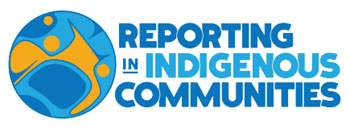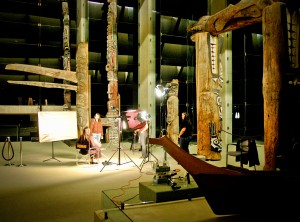Assignment editors are the gatekeepers of our industry. Every day, they’re faced with an enormous task: fill the news program or newspaper with stories that are new, relevant and edgy. Most days, there are too many stories to cover, and not enough reporters.
That means there’s a lot riding on the pitch.
Lousy pitch – and your idea will get spiked before you even get to work on it
Maybe you make a great pitch, but your assignment editor is one of those WD4 Rule types, only interested in Indigenous news stories that deal with Big Tragedy, Big Hope or Big Money.
Here are three tips on how to present your story idea to your assignment editor, and, like that ancient Indigenous saying, “If at first you don’t succeed, try try again.” (OK, maybe that’s not an ancient Indigenous saying, but I imagine generations of hunters following that advice.)
Research strong stories
Pitching a story about Indigenous issues successfully is no different than pitching any other story. A good news story needs to be about people.
“Hey, that kid in custody died… we should do something on Indigenous Child Welfare Agencies,” is not a great pitch. Your wizened assignment editor knows your audience is interested in people, not issues.
Oprah (who may not be a journalist per se, but knows a thing or two about storytelling) says everyone has a story – the question is how can you make it POP for your audience?
Do some research, so you can explain why this story is going to “pop”:
- Who are the people involved in this story?
- What’s at stake for them?
- Why is this story important?
- Does it have strong visuals or scenes?
If you can answer all (or some) of those questions, and summarize the story in a couple sentences, you’re more likely to pique your assignment editor’s interest.
Find the news hook
Residential schools, land claims, hunting and fishing rights… these subjects have been around for a hundred years or more. They are recurring stories because they go to the core of Indigenous-settler relations. They are part of Canada’s narrative, part of our national consciousness.
But is it news? You may not appreciate your assignment editor’s patronizing, bored tone when he asks “What’s new about mouldy Indian houses?” But, it’s up to you to find a new angle, or brainstorm a different treatment.
If you apply a formula to a story about residential schools — find a suffering former student, pull out some archive photographs, mix in a lawyer and a politician or two –who blames your audience for tuning out? The story isn’t tired and hackneyed — the storyteller is.
What can you bring to this story that will make me sit up and pay attention? Maybe it’s youth involvement, or a business angle, or a technology solution. Can you offer special access to something I haven’t seen before? Is there a compelling character who presents this story in fresh way?
Search for stories that will have impact and bring understanding to your audience. Find something that interests you. If it interests you, you’ll share that passion with your assignment editor – and your audience.
Diversity sells
In today’s fragmented news environment, diversity sells (hopefully, your assignment editor got that memo — if not, tell him or her there’s also this newfangled thing called the Internet). Every media outlet needs to reach as broad an audience as possible, and that means reflecting the entirety of your community, your province, your country. We need to tell stories about all kinds of different people — including Indigenous Peoples.
Studies show your non-Indigenous audience wants to learn more about Indigenous Peoples. In some markets, Indigenous Peoples represent significant audience share — ignoring them is a sure-fire way to see your numbers shrink.
Keeping this in mind, “diversity” should be one of the buzzwords (such as “exclusive,” “inside access,” or “enterprise”) that make an assignment editor’s ears perk up. Remind your assignment editor that, in ADDITION to being a fantastic enterprise story about fascinating characters involved in real struggles regarding a pressing public policy issue, this story you’re pitching will present a diverse and under-reported community (or whatever buzzwords your newsroom uses).
If your newsroom is progressive enough to have a diversity audit, then your story will provide some much-needed checkmarks on that balance sheet.





